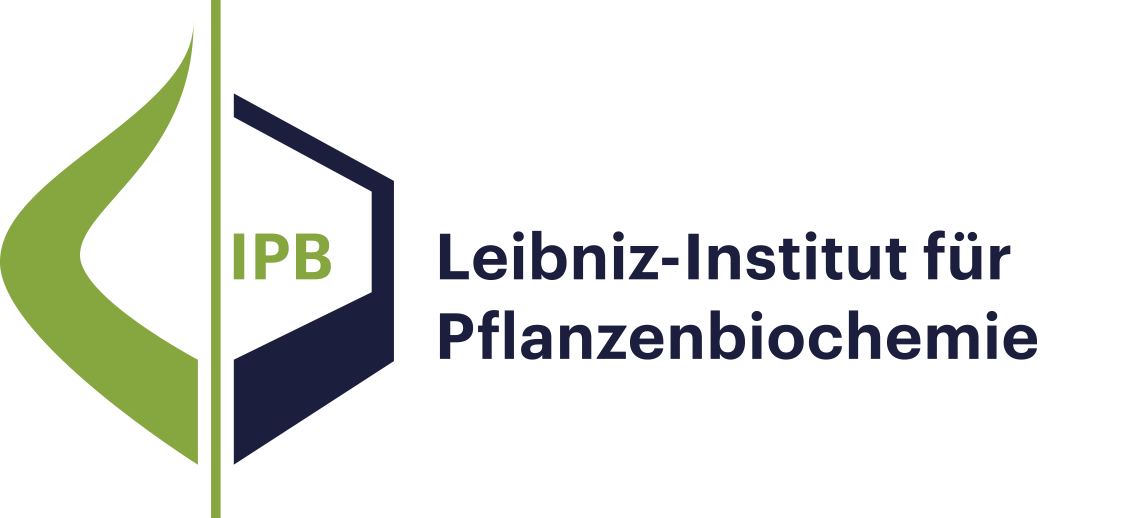Publikationen Program Center MetaCom
- Results as:
- Print view
- Endnote (RIS)
- BibTeX
- Table: CSV | HTML
Publications
Publications
Publications
Publications
Diese Seite wurde zuletzt am 03 Sep 2024 geändert.
Research Mission and Profile
Molecular Signal Processing
Bioorganic Chemistry
Biochemistry of Plant Interactions
Cell and Metabolic Biology
Independent Junior Research Groups
Program Center MetaCom
Publications
Good Scientific Practice
Research Funding
Networks and Collaborative Projects
Symposia and Colloquia
Alumni Research Groups
Publikationen
Publikationen Program Center MetaCom
Publications
In plants, exposure to high light irradiation induces various stress responses, which entail complex metabolic rearrangements. To explore these dynamics, we conducted time‐course experiments spanning 2 min to 72 h with Arabidopsis thaliana under high and control light. Comparative metabolomics, transcriptomics, redox proteomics, and stable isotope labeling on leaf rosettes identified a series of synchronous and successive responses that provide a deeper insight into well‐orchestrated mechanisms contributing to high‐light acclimation. We observed transient transcriptome downregulation related to light harvesting and electron flow before the profound remodeling of the photosynthetic apparatus. Throughout the entire time course, redox homeostasis is tightly balanced between downregulation of production and enhanced transformation of NADPH accompanied by redistribution of reducing equivalents across several subcellular compartments. In both light conditions, C4 acids such as malate and fumarate are produced via anaplerosis. In carbon units, their accumulation in vacuoles surpasses plastidic levels of starch and intensifies notably under high light. In parallel, citrate synthesis from pyruvate is significantly hindered diurnally. Isotopic labeling in 2‐oxoglutarate and glutamate suggests a moderate de novo synthesis of C5 acids from a vacuolar citrate reservoir during the light phase while they are largely renewed during the night. In the absence of a diurnal clockwise flow through the tricarboxylic acid (TCA) cycle, increased oxidation of photorespiratory glycine takes over as a source of reductants to fuel mitochondrial ATP production. These findings, along with previous research, contribute to a model integrating redox balance and linking increased carbon assimilation and nitrogen metabolism, especially in the context of an incomplete TCA cycle.
Publications
Legumes represent an important component of human and livestock diets; they are rich in macro‐ and micronutrients such as proteins, dietary fibers and polyunsaturated fatty acids. Whilst several health‐promoting and anti‐nutritional properties have been associated with grain content, in‐depth metabolomics characterization of major legume species remains elusive. In this article, we used both gas chromatography–mass spectrometry (GC‐MS) and liquid chromatography–mass spectrometry (LC‐MS) to assess the metabolic diversity in the five legume species commonly grown in Europe, including common bean (Phaseolus vulgaris), chickpea (Cicer arietinum), lentil (Lens culinaris), white lupin (Lupinus albus) and pearl lupin (Lupinus mutabilis), at the tissue level. We were able to detect and quantify over 3400 metabolites covering major nutritional and anti‐nutritional compounds. Specifically, the metabolomics atlas includes 224 derivatized metabolites, 2283 specialized metabolites and 923 lipids. The data generated here will serve the community as a basis for future integration to metabolomics‐assisted crop breeding and facilitate metabolite‐based genome‐wide association studies to dissect the genetic and biochemical bases of metabolism in legume species.
Publications
Many plant genomes display high levels of repetitive sequences. The assembly of these complex genomes using short high‐throughput sequence reads is still a challenging task. Underestimation or disregard of repeat complexity in these datasets can easily misguide downstream analysis. Detection of repetitive regions by k‐mer counting methods has proved to be reliable. Easy‐to‐use applications utilizing k‐mer counting are in high demand, especially in the domain of plants. We present Kmasker plants, a tool that uses k‐mer count information as an assistant throughout the analytical workflow of genome data that is provided as a command‐line and web‐based solution. Beside its core competence to screen and mask repetitive sequences, we have integrated features that enable comparative studies between different cultivars or closely related species and methods that estimate target specificity of guide RNAs for application of site‐directed mutagenesis using Cas9 endonuclease. In addition, we have set up a web service for Kmasker plants that maintains pre‐computed indices for 10 of the economically most important cultivated plants. Source code for Kmasker plants has been made publically available at https://github.com/tschmutzer/kmasker. The web service is accessible at https://kmasker.ipk-gatersleben.de.
Publications
Secondary metabolites are involved in the plant stress response. Among these are scopolin and its active form scopoletin, which are coumarin derivatives associated with reactive oxygen species scavenging and pathogen defence. Here we show that scopolin accumulation can be induced in the root by osmotic stress and in the leaf by low‐temperature stress in Arabidopsis thaliana. A genetic screen for altered scopolin levels in A. thaliana revealed a mutant compromised in scopolin accumulation in response to stress; the lesion was present in a homologue of THO1 coding for a subunit of the THO/TREX complex. The THO/TREX complex contributes to RNA silencing, supposedly by trafficking precursors of small RNAs. Mutants defective in THO, AGO1, SDS3 and RDR6 were impaired with respect to scopolin accumulation in response to stress, suggesting a mechanism based on RNA silencing such as the trans‐acting small interfering RNA pathway, which requires THO/TREX function.
Diese Seite wurde zuletzt am 03 Sep 2024 geändert.

